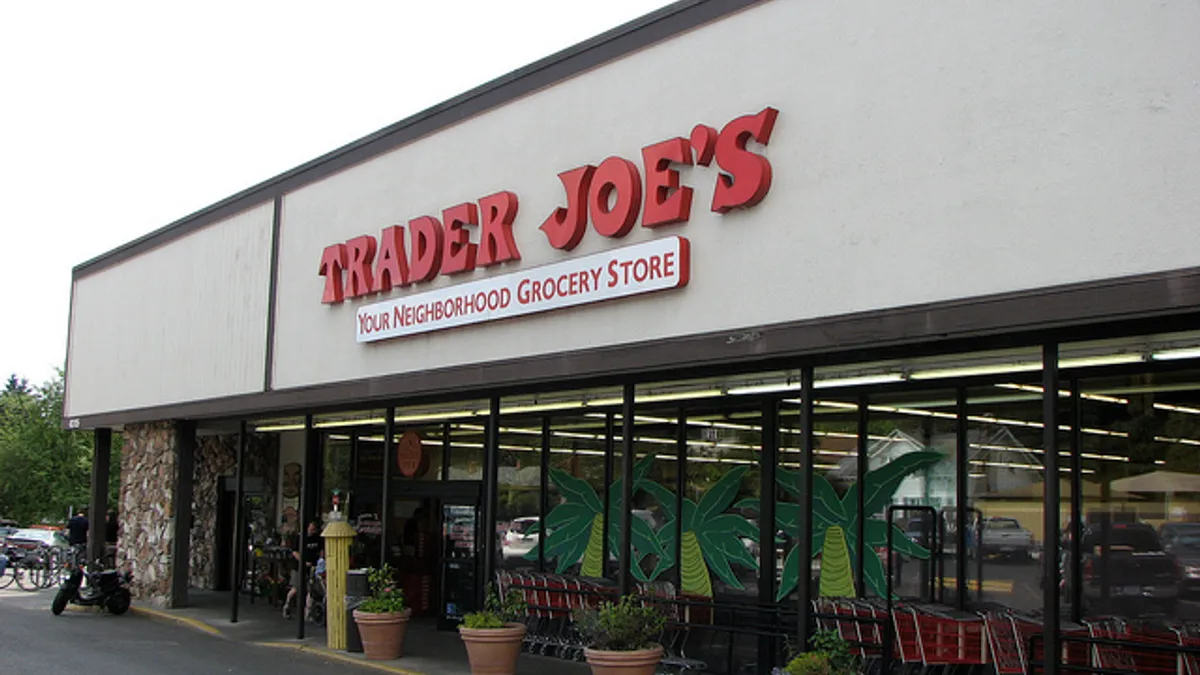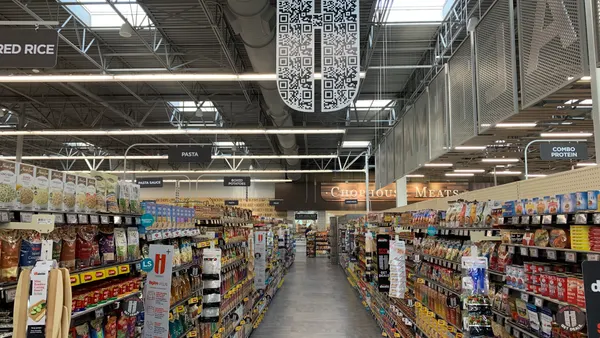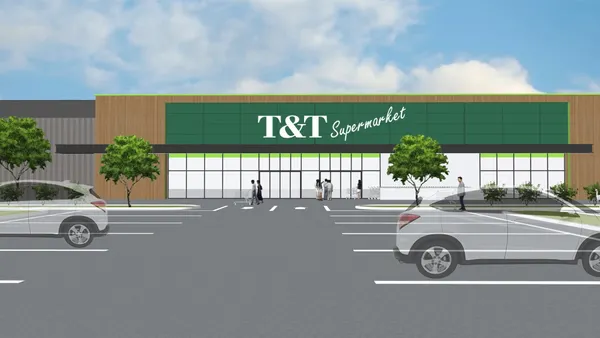Dive Brief:
- Apartment buildings with a Whole Foods or Trader Joe’s on the ground floor achieve, on average, a rental premium of 5.8% more than comparable nearby multifamily communities, according to a recent study by RCLCO Real Estate Advisors.
- The presence of a premium grocer on the ground floor of a multifamily complex attracts millennial tenants — a primary target for most apartment owners — and, according to RCLCO, brings higher rental rates and rent growth.
- The "premium grocer effect” calls attention to the growing importance of easy access to high-quality foods and products for renters and has spotlighted the growing popularity of Trader Joe’s in addition to Whole Foods.
Dive Insight:
RCLCO collected data from 64 apartment communities across 20 major metro areas in the U.S. Those with a premium grocer on the ground floor were compared with two to five nearby similar apartment communities without a premium grocer on the ground floor.
In 2016, RCLCO first looked at the impact premium grocers have on multifamily projects. Since that study, Whole Foods was acquired by Amazon, and other competitive premium grocers emerged or continued to grow.
The 5.8% rental premium represents an increase of 1.5% for Whole Foods and 2.6% for Trader Joe’s since the 2016 study. The pair had the highest rental premium averages — though they were achieved separately. Other premium grocers achieved a 3.3% premium, on average.
Trader Joe’s having an identical impact on rental premiums as Whole Foods is the most surprising data from the study, according to Vahe Avagyan, vice president for RCLCO’s Economic Practice Group and a co-author of the study. Trader Joe’s has significantly smaller stores than Whole Foods, Avagyan said, yet its impact on rental premiums is identical and has grown by more than Whole Foods' since 2016.
The increased costs of constructing a grocery store in a mixed-use building, such as trucking access and ventilation, will hopefully be balanced out by the premium grocer effect, Avagyan said.
“The enhanced performance of the apartments helps to mitigate those potential challenges or concerns on behalf of developers and contractors,” he said.
The statistics to quantify the premium grocer effect were collected before the onset of the coronavirus, and therefore it is unclear how the pandemic has impacted the results. However, the grocery industry has seen sales surge as consumers have turned to it as a primary food source during the pandemic, while restaurants have been hit hard, Avagyan said.
“There is a case to be made for this trend persisting in the future, albeit moderated,” he said. “Increased grocery spending, coupled with an accelerating focus on health and wellness, could drive further increases in the premium that apartment renters are willing to pay to live in communities with direct access to premium grocers.”














